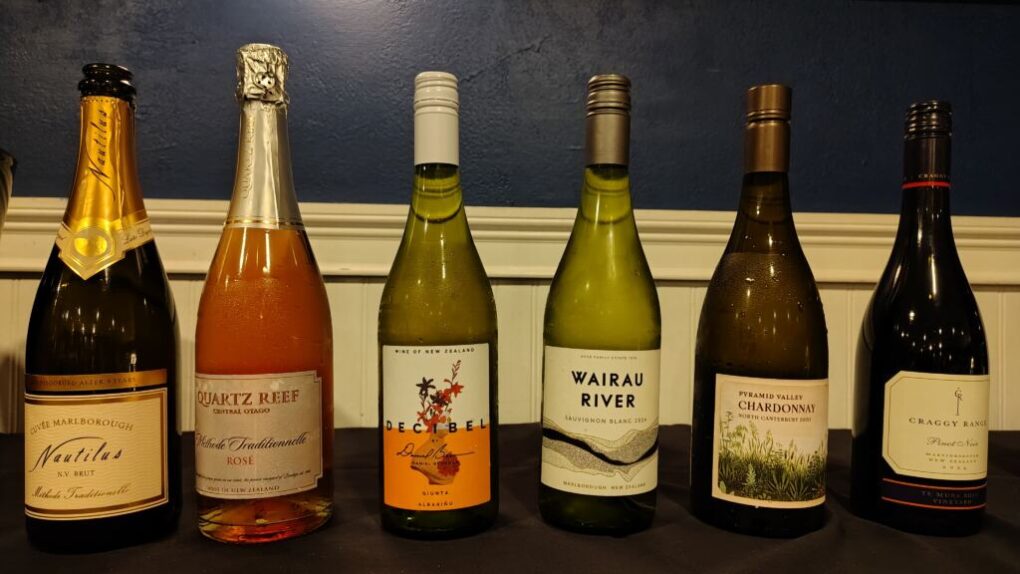
Roughly a generation before sustainable winegrowing became a rising trend, New Zealand producers already recognized the importance of cultivating for the future. Given the unparalleled beauty of New Zealand’s natural landscape it’s not surprising that New Zealanders would strive to preserve it for posterity.
So wine grape growers across the 11 winegrowing regions in New Zealand’s North and South Island came together to create The Sustainable Winegrowing New Zealand (SWNZ) certification program in 1995 to define the parameters for winegrowing sustainability encompassing all phases of wine production. The official sustainable winegrowing certification standards were established in 2002 with the cooperation of New Zealand wineries.
The certification covers soil treatment (approved agrochemicals (fertilizers, pesticides, herbicides, insecticides, fungicides)), water conservation, flora and fauna preservation, waste management, fair labor and wage practices, and response to climate change. SWNZ-certified vineyards and wineries are annually reassessed for eligibility and inspected by an independent agency to ensure that they continue to adhere to SWNZ-established regulations. Almost 100% of New Zealand winegrowing territory is SWNZ-certified, and more than 90% of New Zealand wines are sustainably produced. An SWNZ label on a New Zealand wine ensures it has been sustainably made.
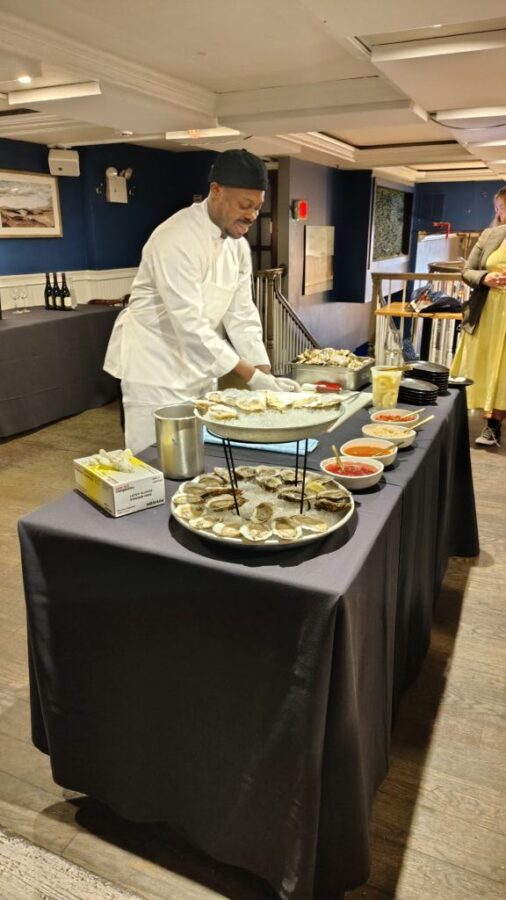
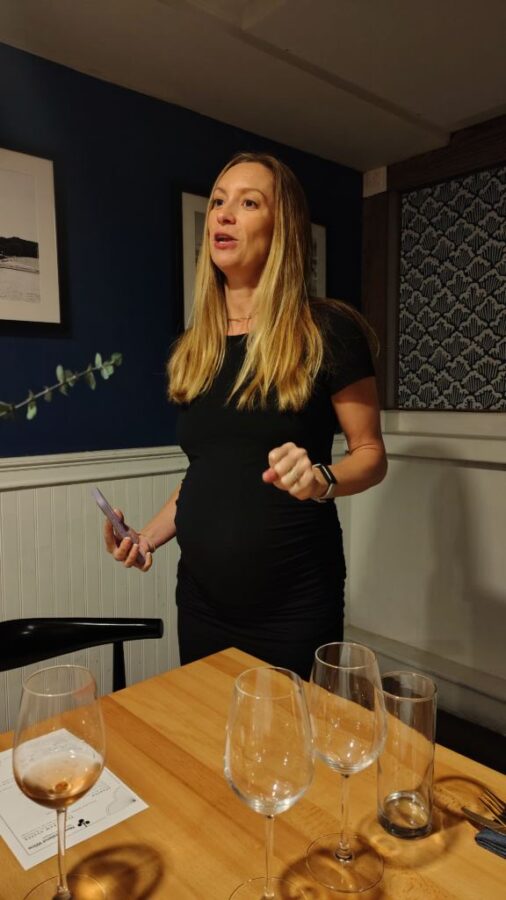
SWNZ came to Sagaponack in New York City on September 29th to celebrate 30 years of New Zealand sustainable winemaking at a media lunch organized by Morgan Perry of Morgan Perry PR. Meagan Littlejohn, Program Manager for SWNZ, and Antonia Fattizzi. Business Growth Advisor of Food & Beverage at New Zealand Trade were joined by Jessi Olsen, Corporate Partnerships Manager at Billion Oyster Project, a New York City-based environmental conservation initiative aimed at restoring and revitalizing the once vibrant oyster reefs in New York Harbor.
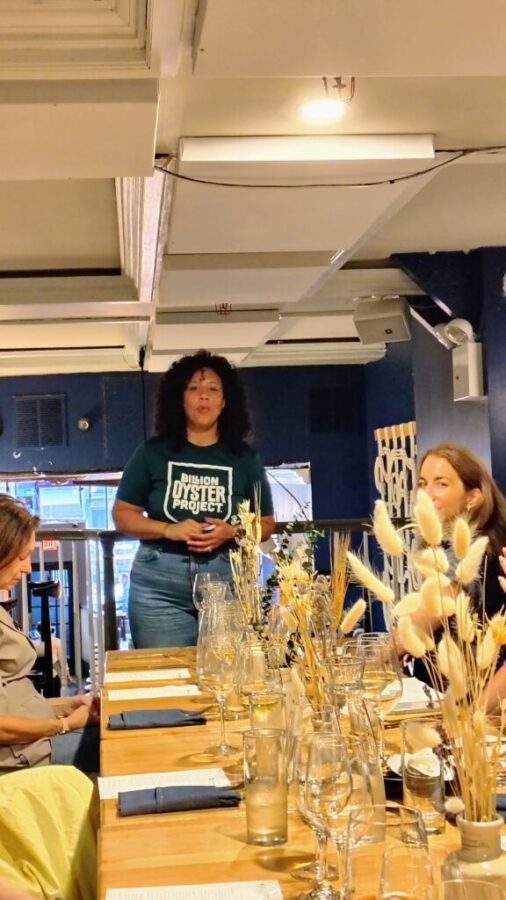
Billion Oyster Project, founded in 2014 by Murray Fisher and Pete Malinowski, works with communities across the five boroughs to protect oyster habitats. Oyster reefs, formed from the hard substrate of oyster shells, provide the spawning grounds for oyster larvae, ensuring the continuity of the species. Oyster reefs are also a vital part of the New York City aquatic and general ecosystem. They are home to an assortment of sea life, and are natural storm buffers, reducing shoreline erosion and property flood damage. Oysters are great water filterers and can naturally remove aquatic and other wastes from as much as 50 gallons of sea water daily. Billion Oyster Project understands the vital role human beings play in the revitalization of oyster reefs, and in a broader sense, the restoration of the natural world through the preservation of the environment.
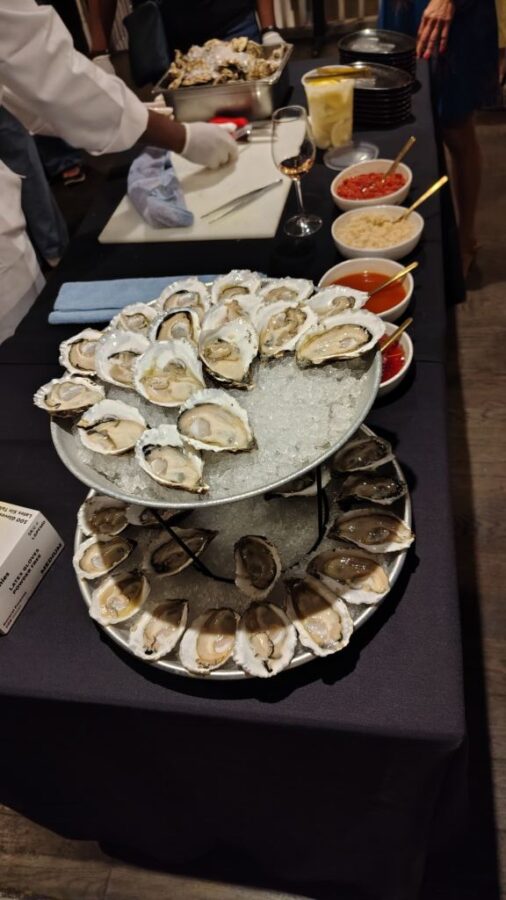
Sagaponack was the ideal choice for this celebration of sustainability. I generally abstain from eating raw oysters out of personal preference but a hands-on oyster shucking experience and the restaurant’s reputation for fresh Peeko oysters from Peconic Bay, in Long Island, New York convinced me to give them a try. I was glad I did because they were delicate, pristine, and sweet, with a silky smooth texture and fantastic especially when combined with ginger and lime mignonette and a squeeze of lemon and cocktail sauce. The fresh locally-sourced, seafood-centered Asian-Mediterranean menu prepared by Executive Chef Philip Choy paired seamlessly with these New Zealand SWNZ-certified wines:
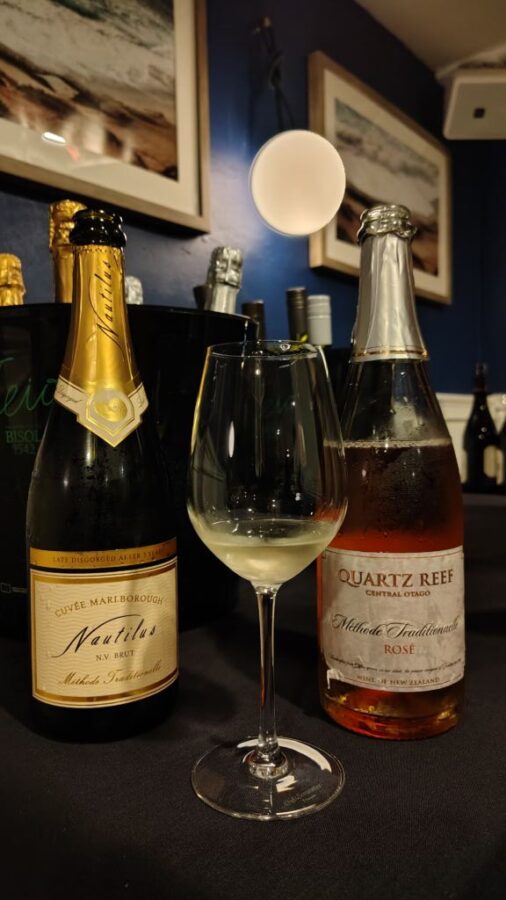
Nautilus Cuvee Brut NV (Traditional Method)
Composition: 70% Pinot Noir, 30% Chardonnay
Region: Marlborough
Price: $40
Production: Lees aging, full malolactic fermentation, and 36 months of aging in bottle
Taste: A clean and crisp sparkling wine with a fine and creamy mousse, balanced acidity and minerality, and a fresh citrus fruit, green herb, almond, and toast flavor profile. It paired particularly well with freshly-shucked oysters topped with ginger-lime mignonette
Quartz Reef Methode Traditionnelle Rosé NV (Demeter Biodynamic and BioGro Organic Certified)
Composition: 100% Pinot Noir
Region: Central Otago
Price: $28
Production: Bottle fermented, and aged 24+ months on the lees
Taste: Refined and multi-layered, with a soft and persistent mousse, balanced acidity, and a ripe grapefruit, red berry, brioche, and sweet spice flavor profile. This sparkling brut rose’ was amazing with raw oysters topped with fresh lemon and a zesty cocktail sauce
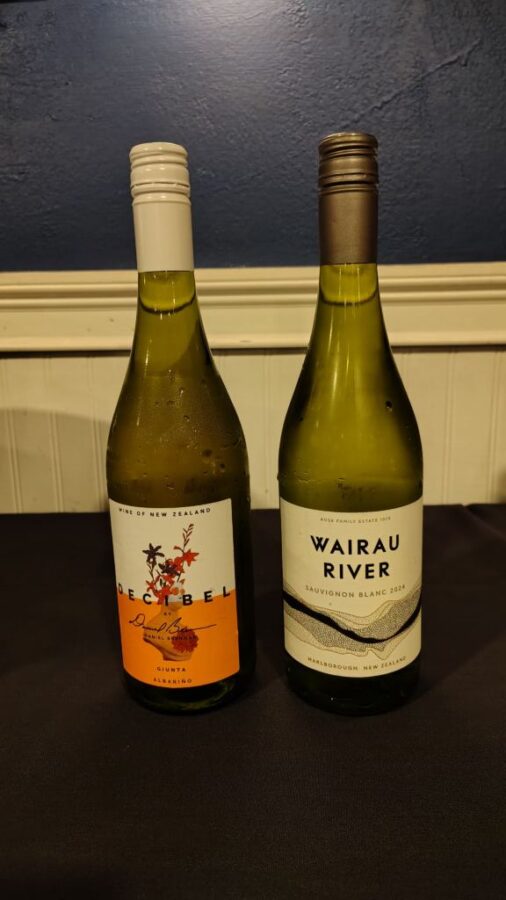
2024 Wairau River Sauvignon Blanc
Composition: 100% Sauvignon Blanc
Region: Wairau Valley, Marlborough
Price: $20
Production: Fermented in stainless steel tanks, and aged on light lees.
Taste: Elegant and fruit-driven, with vibrant acidity and minerality, beautiful floral, citrus, and tropical fruit aromas, and an intense ripe grapefruit, peach, passionfruit, and guava flavor profile
2023 Decibel Giunta Albarino (The only winery (so far) to grow Albarino in New Zealand!)
Composition: 100% Albarino
Region: Hawke’s Bay
Price: $24
Production: Fermented in stainless steel tanks and neutral oak barrels, and crossflow filtered without fining before bottling
Taste: Rich and structured, with soft acidity and salinity, and a lush acacia, lime, grapefruit, peach, and apricot flavor profile
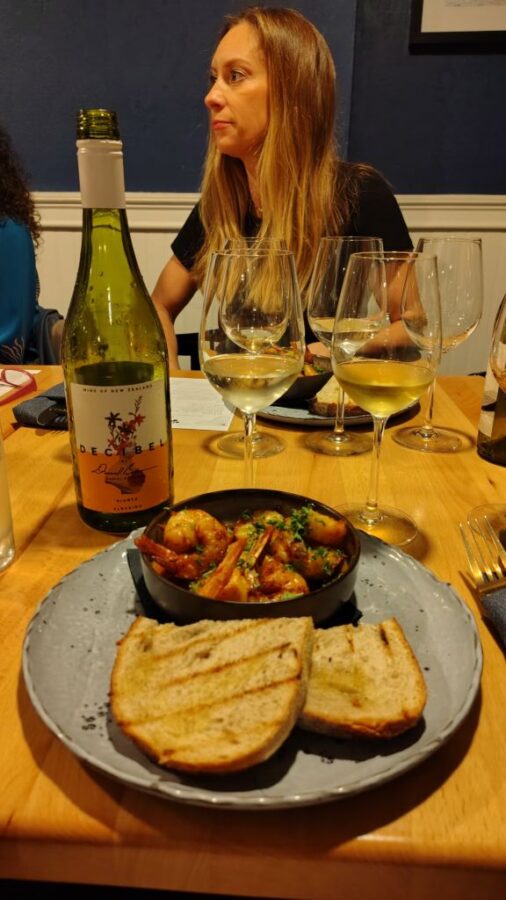
This pair of refreshing fruit-driven whites were fantastic complements to a spicy shrimp cooked in a preserved lemon and paprika sauce.
2024 Craggy Range Te Muna Road Pinot Noir
Compostion: 100% Pinot Noir
Region: South Wairarapa, Martinborough
Price: $30
Production: Fermented in open top stainless steel tanks and French oak cuvees
Taste: Rich. smooth, and bright, with soft acidity, silky tannins, and a lively red and dark berry and stone fruit, sweet spice, and oak flavor profile.
2020 Pyramid Valley Chardonnay
Region: North Canterbury
Price: $45
Production: Naturally clarified with minimal filtration, and 12 months aging in French oak barrels.
Taste: Refined and complex, with good body, balanced acidity and salinity, and a ripe citrus and summer fruit, and roasted nut flavor profile.
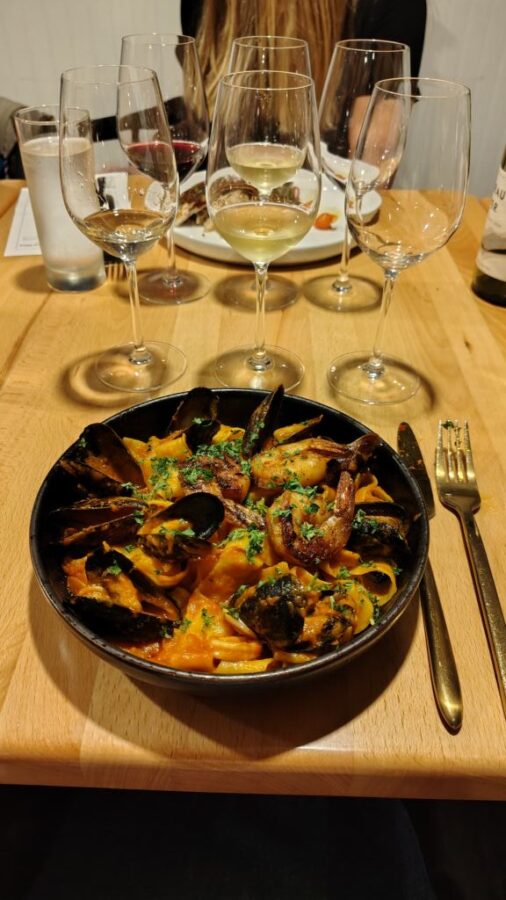
This white wine paired seamlessly with a mixed seafood pappardelle tossed in gochugang (Korean bean paste) sauce. The combination of Mediterranean and Korean flavors also worked seamlessly with the juicy red fruitiness and sweet spiciness of the Pinot Noir.
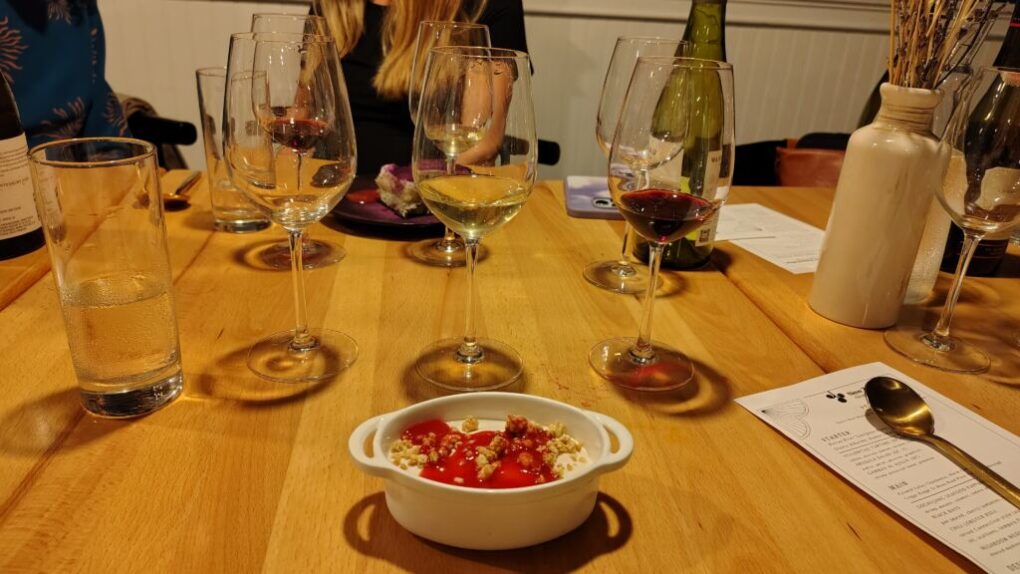
I tried the range of wines with a smooth and creamy panna cotta flavored with mango, almond, lime, and maple, and was pleasantly surprised by how well these fresh and fruit-forward selections paired with not only savory, but sweet flavors t00.

Be First to Comment